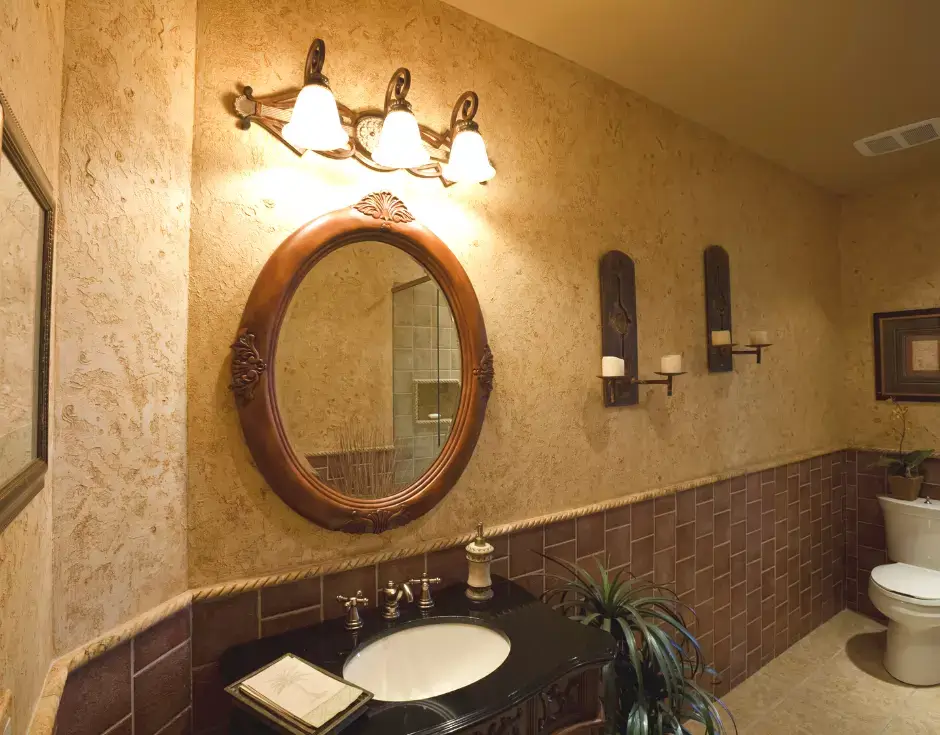If you’re looking for an easy and affordable way to update your home decor, consider adding a faux finish with paint. A faux finish is a painting technique that mimics the look of other materials like marble, wood, or brick. It’s a versatile and creative way to add depth, texture, and character to your walls, furniture, or accessories. Continue reading to learn how to create a faux finish with paint.
Benefits of using a faux finish in your home decor:
- Cost-effective: Faux finishes can create the look of expensive materials without the high cost.
- Customizable: Faux finishes offer various design possibilities and can be customized to match your style.
- Easy to maintain: Faux finishes are durable and easy to clean, ideal for high-traffic areas like kitchens and bathrooms.
- Unique: A faux finish can give your home a unique and distinctive look that sets it apart from other homes.
Now, let’s discuss how to apply a faux finish with paint. You’ll need some supplies to get started:
- Paint: Choose two or more colors that complement each other and fit your desired look. If you are unsure of colors, purchase a Benjamin Moore paint sample from Wallauer.
- Paint brushes and rollers: You’ll need different sizes and textures of brushes and rollers, depending on the faux finish you choose.
- Tape and plastic sheeting: Protect your floors and furniture from paint splatters.
- Faux finishing tools: Depending on the technique you’re using, you may need tools like a sea sponge, rag, or plastic wrap.
Once you have all your supplies, follow these steps to apply a faux finish:
- Prepare the surface: Clean the surface you’re painting and let it dry completely.
- Apply a base coat: Apply a base coat of paint to the surface and let it dry completely.
- Apply the top coat: Use a faux finishing tool, like a sea sponge, rag, or plastic wrap, to apply the top coat of paint. You can experiment with different techniques to create different textures and patterns.
- Blend the colors: Use a dry brush or a glaze to blend the colors and create a more natural look.
- Seal the finish: Apply a clear topcoat or sealer to protect the finish and make it more durable.
You can create several faux finishes with paint, including glazing, sponging, rag rolling, and stenciling. Glazing involves applying a translucent layer of paint over a base coat to create a subtle effect. Sponging uses a sponge to create a mottled effect, while rag rolling creates a more textured look. Stenciling involves using a stencil to create a pattern or design on the surface.
To create a professional-looking faux finish, keep these tips in mind:
- Practice first: Experiment with different techniques and color combinations on a small area before tackling a larger project.
- Use the right tools: Make sure you have the right tools for your technique, and practice using them before starting.
- Be patient: Faux finishes take time and require multiple layers of paint. Take your time with the process, and you may end up with a sloppy finish.
- Don’t be afraid to make mistakes: Faux finishes can be forgiving, so don’t worry if you make a mistake. You can always paint over it and start again.
Creating a faux finish with paint is an easy and affordable way to update your home decor. You can create a unique and professional-looking finish that impresses your friends and family with practice and patience.

 Interior Paints
Interior Paints Exterior Paints
Exterior Paints Primers
Primers Stains & Clears
Stains & Clears
 Paint Brushes
Paint Brushes Paint Roller
Paint Roller Paint Trays & Liners
Paint Trays & Liners
